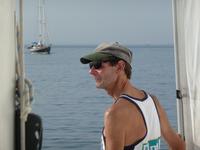
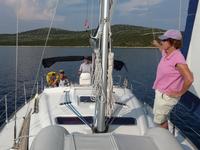
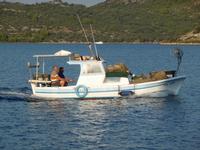
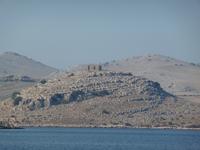
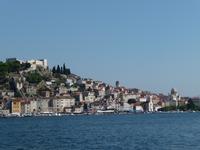


 |
 |
||
 |
 |
||
 |
 |
 |
 |
|||
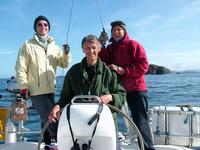 |
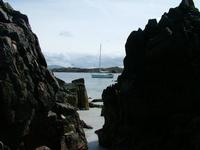 |
The last photograph above, and the panoramic view below, are of Tinker's Hole near the end of the Ross of Mull at Lat 56 degs 17.50 mins N, Long 6 degs 23.00 mins W. Once through the narrow entrance, this is a spectacular anchorage almost completely encircled by pink granite rocks.
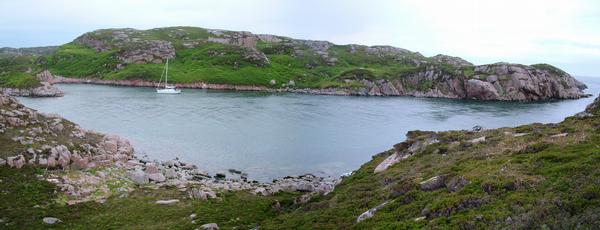 |
The previous year, 2007, the destination was the Firth of Clyde (Bute, Arran, Kintyre) in a "Bavaria 38". Here are some more photos. As usual, click to enlarge.
 |
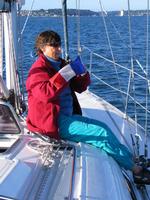 |
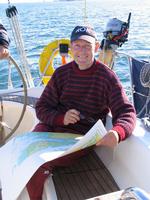 |
||
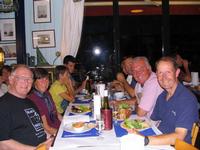 |
|||
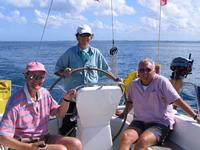 |
The sun's gravitational force on the earth is many times greater than the moon's. That's why the earth goes round the sun. However, because the moon is much closer to the earth, its gravitational gradient near the earth is greater than the sun's. Consequently, the sun's effect on tides is less than half the moon's. Spring tides, when the tidal range is greatest, occur when the two effects coincide, two or three days after each new moon or full moon. Neap tides, when the tidal range is least, occur about a week later when the two effects partly cancel each other.
Finally, at any given place, high spring tides always occur at roughly the same time of day or night. In the Brittany, the difference between high and low spring tides can be over 9 metres!
Click on this link if you would like to know more about the physics of tides.